If you are in North America, you likely have pine needles all around you! Did you know that these needles offer a host of benefits? From aromatherapy to cleaning to medicinal benefits, learn how to use pine needles in daily life.
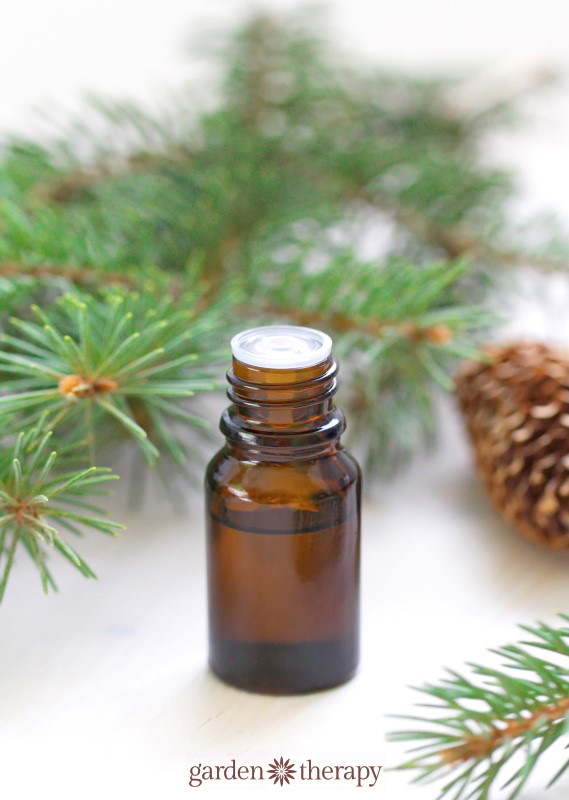
When I think of winter gardening, I think of evergreens. For those who live up north, evergreens are some of the only greenery you will see for months.
However, what most people don’t know is that the evergreen family of pine trees, Pinaceae, are edible and medicinal! Pine is easy to find year-round, making it extremely accessible for most people. It has many useful benefits (I use it for aromatherapy and cleaning!) and is ideal for a selective herbal cabinet.
Pine is also good for respiratory health, making it very useful for this cold and flu season! With all that being said, this herbal guide to pine will cover how to forage for needles, the health benefits of pine, and useful ways to utilize one of winter’s best plants!
Lori’s Green Blessings
This article was reviewed by herbalist Lori Snyder. This is not to be used as personal medical advice; always consult your health care professional for individual concerns.
Here is what Lori had to say:
The taste and flavour of pine is an indicator of its’ healing properties. One of the ways I love to engage with pine is to put the resin or fresh needles into honey. This infusion is great for sore throats and for flavouring my homemade tea blends. Anything sour-tasting lets us know it is full of vitamin C. The resin is anti-microbial therefore helping with inflections. Note the ascorbic acid is found to be higher when harvested in the winter months vs the warmer months!
History and Meaning of the Pine Tree
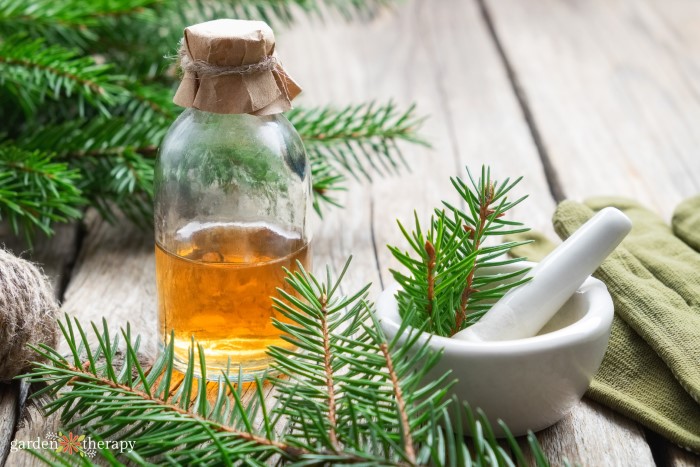
The beacon of green during the winter, pine trees have been around a LONG time. The pine species originated about 150 million years ago in the mid-Mesozoic Era and spread during the Cretaceous Period. As the trees evolved in response to new plants and trees, the family found its way into low nutrient soil, extreme cold or heat, and into fire-prone landscapes.
Christians and Pagans have been using the evergreen tree for thousands of years during winter festivals. During the winter solstice, Pagans used branches to decorate their homes and remind them that spring was on the way. In Northern Europe, people planted evergreen trees in boxes inside for the winter. Over time, this and other practices led to the tradition of decorated Christmas trees.
Pine has been used since the Middle Ages for its medicinal benefits and was a favourite healing plant for Native Americans. They taught early settlers how to utilize the needles, bark, and sap for their health.
The Eastern White Pine in particular was useful to settlers in the winter as it is high in Vitamin C and was used to treat scurvy. The needles also contain Vitamin A. Native Americans have been using pine for centuries to help with the respiratory system and for healing wounds.
Identifying Pine Needles
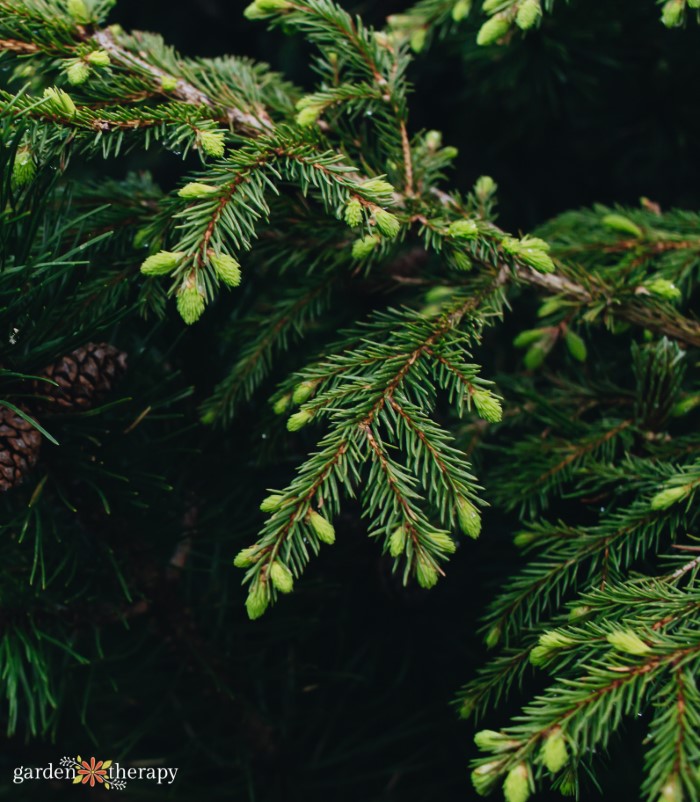
What you may think is a pine tree, may not in fact be a pine tree! Pine, fir, and spruce trees are often confused as not all conifer trees are pine trees and not all evergreens are coniferous. It doesn’t help that common names of trees can be misleading. For example, a Douglas Fir is not a fir tree and is actually a pine tree. My first advice for identifying pines is to look at the scientific names of the tree and not their common names.
To define pine trees (Pinus spp), look at their needles. Pine needles come in clusters of 1-6, most often found in 2-5. These clusters are called a fascicle and will have a papery sheath at the base, as well as an attached pinecone.
Most pine species will have long needles but there are a few with shorter ones. Meanwhile, spruce or fir needles will be attached to the branch rather than a cluster.
When foraging, be sure to look for local species in your area. Research them ahead of time so you know what to look for. It is also important that you do not harvest any yew, a conifer often mistook as pine, but its needles are poisonous.
Since pine trees are around every corner in North America, you could forage for them in the forest. However, if you’ve never foraged before or are inexperienced, be sure to consult with someone who has some experience. A great resource is the online foraging course from Grow Forage Cook Ferment for those who are interested in learning more about safe foraging.

Common pine varieties along the west coast include:
- Douglas Fir
- Ponderosa Pine (not suitable for use by pregnant women)
- Blue Spruce
- Coastal Redwood
Health Benefits of Pine Needles
There are many health benefits of pine needles, making it a great basic selection for your herbal cabinet. Pine needles contain a compound called alpha- or beta-pinene, which is a natural decongestant, anti-inflammatory, antibacterial, antimicrobial, and anxiolytic.
When ingested, pine can be used to treat colds and coughs, reducing phlegm and helping with sinus infections. It is an expectorant, which means it thins mucus to help you cough and draw phlegm up from the lungs.
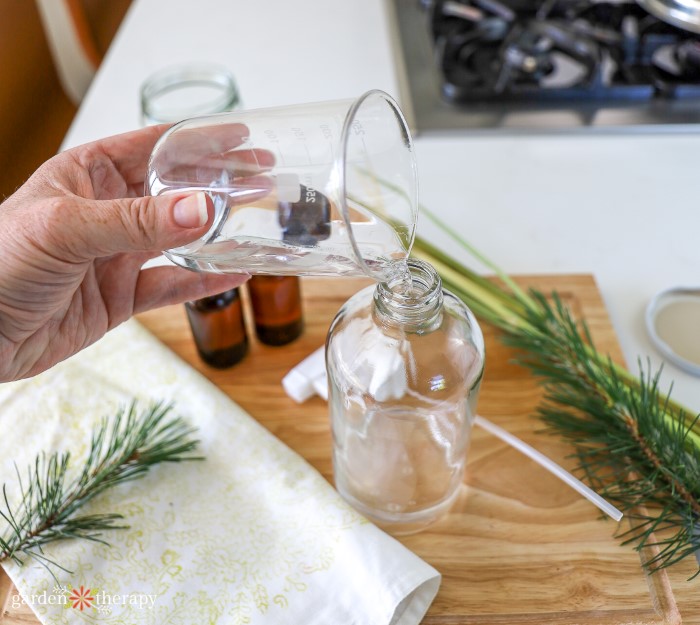
As mentioned earlier, pine needles are high in Vitamin C and are especially helpful in preventing scurvy. Younger, fresh needles called pine tops contain the most Vitamin C and are an effective survival plant.
Traditionally, these pine tops are boiled in water to make a tea used to treat fevers and coughs, as well as increase urination. Essential oils are collected specifically from pine needles for remedy use, but the needles can also be used for crafts and food.
When applied topically, pine can be used to draw out toxins or objects from the skin. Pine pitch is especially helpful in removing splinters, glass, and toxins from bug bites. This can help to avoid infections.
You can also bathe in it to help with joint inflammation and to ease sore muscles. Traditional Chinese medicine used infused pine in wine to apply topically for joint pain. Pine bark is especially convenient for topical uses.
Using Pine Needles
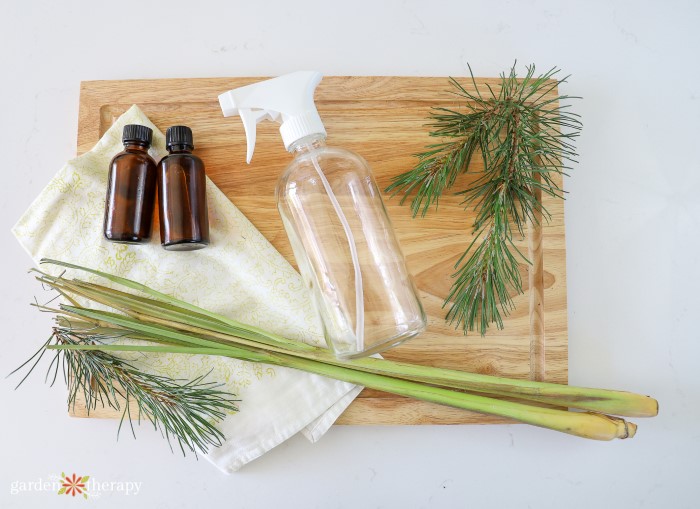
Given the range of benefits, there are many ways to incorporate pine needles. First, forage for them well away from roadsides where there might be constant vehicle exhaust, and the same if you live in a rural area that is subject to roadside herbicides, pesticides, or other contaminants.
The flavour of the needles can vary quite a bit based on the season and species. Spring is the best time to harvest needles as they are a little tastier and more sour than older needles.
It is also best to harvest the bark in the spring. Try to choose a tree that could use some thinning or has fallen from a winter storm. While spring is the optimal time for harvesting, you can do it year-round.
Before using the needles, you will want to thoroughly wash and dry them. Cut the brown ends off and trim the rest of the needles into small pieces. Let them dry in a basket or gently bruise the needles with a spoon to release the compounds, which will also produce more flavor for immediate use.
Now that we have discussed all things pine, let’s use them!
Pine Needle Vinegar
Infusing vinegar is one of the easiest ways to amp up your cooking. I often use different combinations of herbs to get different palettes for dishes. Infusing with pine needles will provide a balsamic flavour. Check out my guide on herbal-infused vinegars for step by step instructions on how to infuse your own vinegar. Be sure to use only clean and dry pine needles to avoid spoilage.
Pine Needle All-Purpose Cleaner
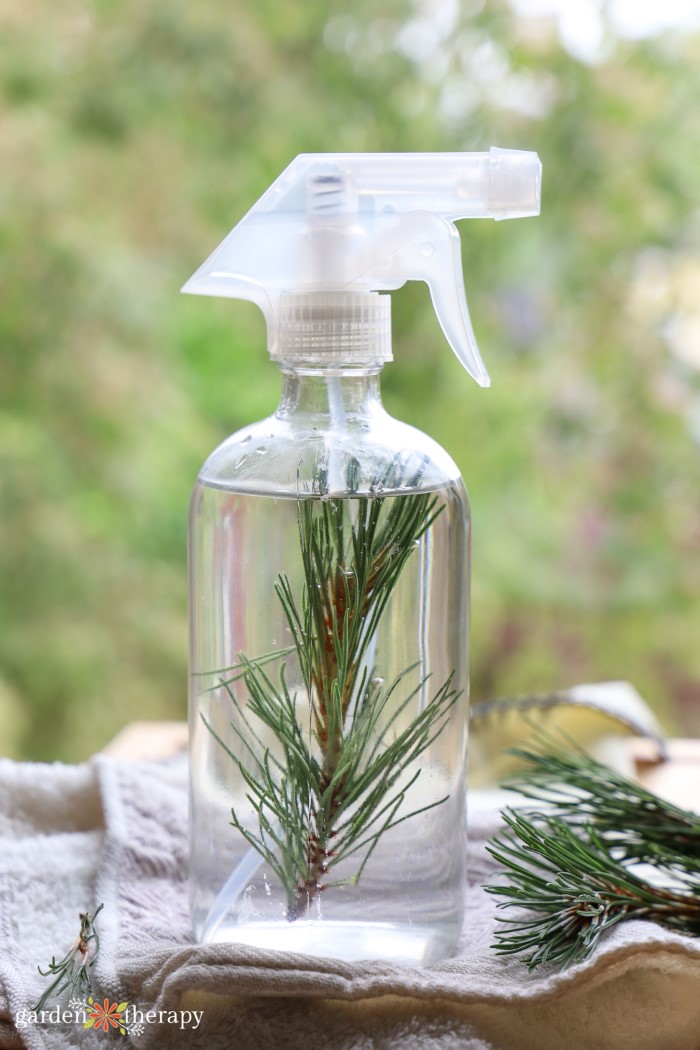
I like to infuse alcohol and vinegar cleaners with pine for use around the house. It adds a refreshing, winter scent that makes the space feel clean instantly. To make your own all-purpose cleaner, combine the pine-infused vinegar above with baking soda and castile soap. You will likely want to use a basic, white vinegar as your base for cleaning purposes. This can be used in the kitchen, bathroom, on the floors, and anywhere else that needs some pine action.
Pine Needle Tea
Pine needle tea is the most traditional way to utilize the herbal benefits of pine. To make your own cup, add a small handful of pine needles to a mug and pour boiling water over top. Allow the needles to steep until they turn a light brown or sink to the bottom of the cup. You may wish to place a saucer over top to keep the essential oils in. Peppermint, catnip, and thyme also compliment the flavours and benefits of this tea well. Add honey for some sweetness!
Pine Needle Salve
Making a healing salve is an effective way to use pine needles topically. I recommend the Peppermint Pine Salve from Reformation Acres. Apply to your temples or chest for headache relief, or on your body for sore muscles and joints.
There are many ways to use pine needles, making it a great addition to your remedy list and your herbal cabinet. The health benefits alone are worth the time spent learning to identify pines from other conifers and to forage from your local forest.

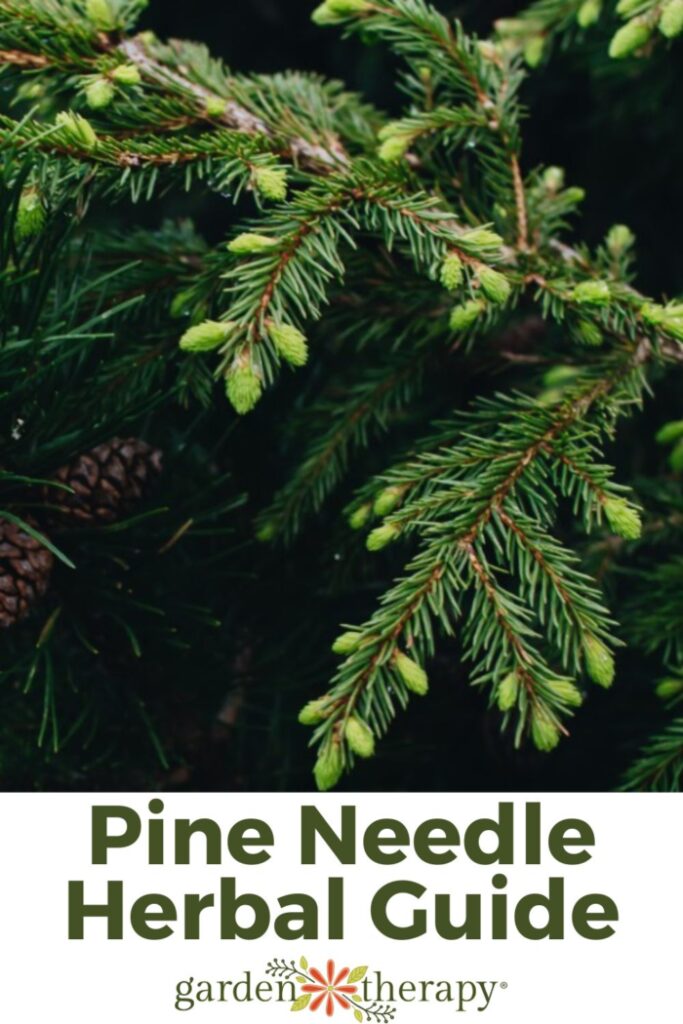



I liked the article in general but the headline is very misleading: this article does not teach how to identify various pine species, what to speak of similar looking species with toxic properties.
As a botanist, I would expect comparative photos + highlighting the main differences between species.
We need a chef for what flavours can combine with the pine to enhance the taste.? Only 12 animals use the pine for life and sustenance for the oak tree it is 300. Why?
I can’t get pine needles what other herbs can I use in it’s place?
The other needles are listed in this post.